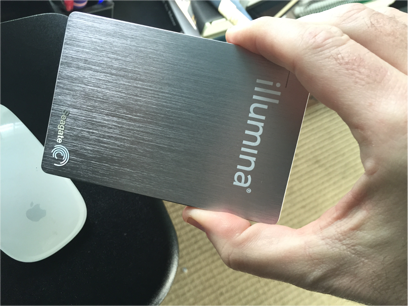
For the past few months, I’ve been traveling through my genome with the guidance of a couple dozen scientists. On Monday, Stat published the first part of my narrative of the experience. You can read it here.
As part of the package, I’ve also set up a parallel web site for the scientific nuts and bolts. I’ve posted some of the analysis that researchers produced while poring over my genome. And you can find the raw data of my genome there, too (including files of variants, and the original, gigantic BAM file). I hope it will be of use to teachers who want to show students how to make sense of a genome. I will add more materials as the next two parts of the series are published.
This week I also talked about the experience a few times.
Here’s my interview with “The Takeaway.”
Here’s my interview with “Here & Now.”
And here’s an article in Boston Magazine.
On Monday, the second installment of “Game of Genomes” will be published by Stat. I’ll be investigating some of the biggest mysteries of our genomes. Only about one percent of our DNA, for example, encodes protein-coding genes. The other ninety-nine percent is a vast expanse of junk with a few jewels sprinkled here and there. I enlist a scientist to help me hunt for one of those jewels and show me how it influences my health. I hope you enjoy it.
I can still remember the shock and disbelief I felt when I first heard about fecal transplants–a treatment for lethal gut infections that involves putting stool from a healthy person into a sick patient. Today it’s clear that fecal transplants work very well–often curing patients for whom antibiotics have failed.
But why they work remains something of a mystery. Poop turns out to be remarkably complex. I write about the best hunches that scientists have so far for my column this week in the New York Times.
There’s an intriguing parallel between their ideas and my earlier column about how soil microbes can protect crops from diseases. Microbiomes everywhere!
July 31: Plenary lecture at the annual meeting of the Botanical Society of America in Savannah: “Plants Are Weird: Epigenetics, Journalism, and the Alien Beauty of Botany”
September 8: University of Nebraska. Lecture: A Journey to the Center of the Brain. Details to come
January 28-29, 2017 Rancho Mirage Writers Festival
You can also follow me on Twitter, Facebook , LinkedIn, and Google+. And there’s always carlzimmer.com.
Best wishes, Carl
Originally published July 15, 2016. Copyright 2016 Carl Zimmer.